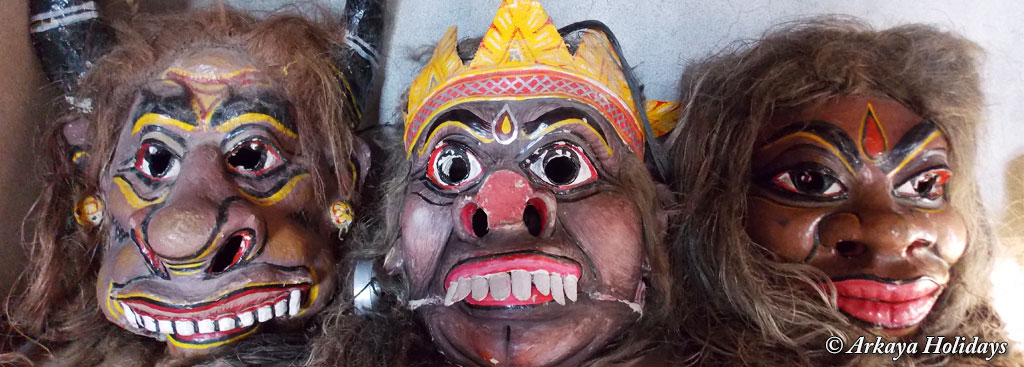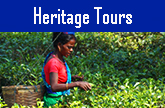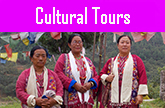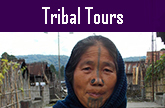Majuli Tour
Tour Duration : 3 Nights / 4 Days
Travel Season : October to April
majuli tour itinerary:
Day 01: Jorhat - Majuli Island (25 kms, 45 mins drive and 1 hr ferry ride)
Meet upon arrival at Jorhat Airport / Railway Station and take transfer to Majuli Island. En-route cross - the Brahmaputra River by local ferryboat.
Majuli Island:
Majuli, the largest river island in the world, is being short listed for future status of UNESCO World Cultural Heritage Site. The formation of this river island dates back to 1691 AD, when a great flood swept Assam and created a new island in the midst of river Brahmaputra. Majuli is acclaimed mainly as the main centre of vaishnavite culture and satras of Assam. Srimanta Sankardeva, the Vaishnava saint and religious reformer of vaishnavism and his disciple Madhavdeva took forward the vaishnavite culture at Majuli. The first satra (monastery) was established at Belguri, the western part of Majuli.
The satras represent the preservation and propagation of socio-cultural ethics and ideals of Assam. There had been about 66 satras at Majuli. At present, only 31 of them are survived. These satras are great places of visit during the Raas festivals. Majuli also appeals tourists for its various attractions like rare seasonal migratory birds, display of various collection of traditional handicrafts, pottery, various ethnic dance forms, religious and mythological-based dramas etc.
At Majuli, a rare sight of Gangetic River Dolphin in the mighty Brahmaputra River may be an experience for lifetime.
Arrive at Majuli and check-in at hotel / traditionally built bamboo hut. Later visit -
Auniati Satra:
Founded by Niranjan Pathakdeva, the main attraction of this vaishnavite satra are its Paal Naam Ceremony, Dashavatar dance and Puppet shows. The satra also offers a magnificent display of ancient collection of utensils, jewelry and handicrafts representing Assamese culture.
Garmur Satra:
Garmur satra is famous for its rare collection of a huge wooden pair of 'Garuda' birds and ancient utensils. It is said that Ahom king Shiva Singha gave 30,000 acres of land for the formation of this vaishnavite satra. The main attraction of this satra is the performance of Raas Leela.
Rest of the day: Free at relaxation. Overnight: Stay in hotel / bamboo hut.
Day 02: Majuli Island
In the morning after breakfast, have a full day excursion to visit -
Uttar Kamalabari Satra:
Uttar Kamalabari satra, a part of the actual Kamalabari Satra was founded by Padma Aata or Badula Aata, a disciple of Shri Shri Madhavdeva. It is a centre of Assamese art, culture and cultural studies. The satra is famous for Ankia Naat drama and Saali dance forms. It also has a branch in Guwahati. This branch has displayed Sattriya dance in many states of India and abroad.
Natun Samaguri Satra:
Globally famous for traditional art of mask making culture, Natun Samaguri Satra is a newly instituted branch of Samaguri Satra, originally established by Chakrapani Ata, an illustrious disciple of vaishnavite saints Srimanta Shankardeva and Shri Shri Madhavdeva. Experts of this monastery make masks for the performers of religious plays and also for decorative purpose. Masks crafted in this monastery are exported on demand made by the tourists from time to time.
Dakhinpat Satra:
Dakhinpat Satra was set up by Banshi Gopal in 1584 who was a disciple of Satradhikar Shri Banamali Dev. The gateway of the satra is ornamented with religious motifs, animals and flowers while the interior of the satra is decorated with similar sculptures and paintings. The idol of Mahaprabhu Jadavarai is worshiped in the Naamghar, while the walls engraved in religious carvings reflects a divine and sacred thing. The satra is a treasure trove of cultural antiques and the home to various performing arts and dance forms contributed vaishnavite saint Mahapurush Srimanta Sankardeva. The satra is mainly famous for Raas Leela during the months of October and November where thousands of devotees flock in the holy satra every year.
Pottery culture:
Pottery is an ancient culture of Majuli. It is one of the traditional forms of cottage industry in Assam. At present, more than 4000 people at Majuli live on pottery culture for their livelihood. The potters at Majuli practice a peculiar technique in which they beat the clay by hand to make the utensils. Visit Kumhar Gaon to have a glimpse in the rural lives of the potters at Majuli working without the wheels which indicate a historic origin of this culture.
Optional Activity: Enjoy a cultural showcase of 'Bhaona' (Traditional Assamese Religious Play) performed by the monks of vaishnavite satras.
Overnight: Stay in hotel / bamboo hut.
Day 03: Majuli Island
In the morning after breakfast, have a full day excursion to visit -
Mishing Tribal Village:
The Mishings are the largest ethnic tribal group in India. Earlier called Miris in the historical days, this group belongs to greater Tani people community, which comprises other Tani tribes such as Adi, Apatani, Nyishi, Padam, Minyong etc. in India and in Tibet Autonomous Region in China. The cultural, linguistic and ritual aspects of all Tani tribes are quite similar. The Mishings specifically belong to a Southeast Asian sub-race of the Mongoloid race. There are no written records about the migration of Mishings from hills to the plains of Assam. Historical and folklore sources regard that the Mishings were the Adis who migrated to Assam. Legend narrates of the Mishings coming in contact with the more civilized communities residing in the plains of Assam during early 16th century.
The Mishings originally believed the Donyi-Polo religion, but later on a majority of them converted to Hinduism and a minimal group took to Christianity. Ali-Aye-Ligang is the major festival of this tribe celebrated during the month of February. They also observe other festivals such as Pohrag and Dobur. Mishing culture exhibits traditional craft of weaving colourful cotton cloths. Mishing women weave cotton jackets, light cotton towels, endi shawls, thick loin cloths and shirting. Mishing women weave 'ege', 'rihbi', 'gaseng', 'gero', 'seleng gasor', 'riya', 'segreg' and 'potub'. All these are beautiful cloth sheets with broad & narrow stripes of bright contrastive colours worn by Mishing women. They also weave 'niseg' so that mothers can carry their babies in their back.
Deori Tribal Village:
The word 'Deuri' is derived from the word 'Deo' implying great and wise. Deoris are a major ethnic tribe of Assam. Their descendents were originally priests and worshippers whose source of livelihood was agriculture. The Deoris speak the Deori language. History suggests that Deori language was the original language in the Chutia kingdom before the advent of Ahoms in Assam. They construct their traditional stilt houses with bamboo, wood, cane, reeds etc. They belong to Hinduism who worships Hindu God and Goddess, Shiva and Parvati. The Deoris celebrate two major festivals - 'Bohagiyo Bisu' and 'Maghiyo Bisu' ie, Bohag Bihu and Magh Bihu respectively. At Majuli, Deori people are mainly concentrated in two Deori villages, namely Mai Deori village & Sriram Deori village near Jengraimukh.
Sonowal Kachari Village:
Designated to be the scheduled Bodo tribal community, Sonowal Kacharis form the third largest tribal group (plains) of Assam. They are primarily found in the districts of Dibrugarh, Tinsukia, Jorhat, Golaghat, Sibsagar, Lakhimpur and Dhemaji. It has been very difficult to trace the origin of Sonowal Kacharis over the years. It is popularly believed that a few population of the Kachari tribal community were occupied in cleaning gold elements from the sands of river during the reign of the Ahom rulers. Thus, the prefix 'Sonowal' meaning 'gold washer' was added before their main tribal identity 'kachari' to indicate their particular population. A famous anecdote recommends that during the rule of Ahom king Godadhar Singha, a 'Gossian' (meaning a priest) named 'Kechaideo' had mystical powers of contributing a definite quantity of gold in a bamboo tube. After becoming followers of 'Kechaideo', these people became popular as Sonowal Kacharis.
Sonowal Kacharis have 7 exogamous clans namely Chiripuria, Balikhitiari, Ujani-Kuchiya, Amarabamiya, Tipamiya, Dhulial and Namoni-Kuchiya. Yet again, these clans are sub grouped into 14 sub-clans namely Muktal, Hagral, Borttajoal, Madan, Ahmal, Manikiyal, Dhekial, Formal, Oingial, Saru Hazowal,Dangral, Kumral, Chetial and Lothial. Sonowal Kacharis are dedicated followers of Vaishnavism. Some prominent songs of Sonowal Kacharis are Husori, Haidang, Biya Naam, Aai Naam, Gossain Naam, Dhai Naam, Apeswara Naam and Lakhimi Naam. Some amazing traditional dance forms in addition to Bihu are Bohuwa dance, Kula-burhir dance and Hugra dance.
The Sonowal Kacharis presently do not have any particular dialect of their own. They commonly speak Assamese language. During Ahom rule, the Sonowal Kacharis in their course of integration with the non tribal communities adopted non tribal surnames like Bora, Saikia, Hazarika etc. Agriculture and poultry farming of rearing hens, ducks & cattle are the major occupations of Sonowal Kacharis. Drinking of Rice Beer is a popular habit among masses. Weaving at traditional ordinary weaving machines at home to produce items like endi chadar (silk cloth) and gamocha is a customary activity among women.
Later, enjoy a magnificent Sunset view in the Brahmaputra River from Ferry Point.
Overnight: Stay in hotel / bamboo hut.
Day 04: Majuli - Jorhat departure (25 kms, 45 mins drive and 1 hr ferry ride)
In the morning after breakfast, take transfer to Jorhat Airport or Guwahati Airport / Railway Station for your onward destination. En route cross - the Brahmaputra River by local ferryboat.
Extended Itinerary: one additional day's stay in Majuli
One Extra Day: Majuli Island
In the morning, have a full day excursion to visit the wetlands (beels) of Majuli Island which serve as a major birding hotspot in Assam. The Revenue Department under State Govt. of Assam owns 156 beels at Majuli. During flood, the adjacent wetlands join into one single large water body and generates auto stocking of local fishes.
The migratory birds generally visit Majuli during winter from Europe, North Asia, South Asia, China, Tibet, Nepal, Kashmir and Ladakh for its cool climate & fresh water in the wetlands after flood every year.
Visit - Sakuli beel, Bhereki beel (located near Sakuli beel in front of Laholial village), Daukpara (located adjacent to Sakuli beel), Rambolia (a property of Dakhinpat satra near Brahmaputra river linked to Dubori Toli beel), Bor beel (located adjacent to Rawanagaon) and Dubori Toli beel (located in front of Mekheli Gaon) to witness abundance of endemic, migratory and endangered birds species.
Interesting species:
Little Grebe, Spotted billed Pelican, Large Cormorant, Oriental Darter, Grey Heron, Open-billed Stork, White Adjutant Stork, Lesser Adjutant Stork, Purple Heron, Pond Heron, Cattle Egret, Chest-nut Bittern, Great Egret, Little Egret, Greylag Goose, Bar-headed Goose, Lesser Whistling Teal, Ruddy Shelduck, Common Shelduck, Lesser Whistling-Duck, Mallard, Cotton Teal, Red Crested Pochard, Black Kite, Brahminy Kite, Common Moorhen, Purple Moorhen, White breasted Waterhen, Pheasant tailed Jacana. Bronzed winged Jacana, Red-wattled Lapwing, Stone Curlew, Black-headed Gull, Brown-headed Gull, River Tern, Common Green Pigeon, Spotted Dove, Red Turtle Dove, Large Indian Parakeet, Rose Ringed Parakeet, Red-breasted Parakeet, Large Hawk Cuckoo, Asian Koel, Barn Owl, Eurasian Eagle-Owl, Indian Scops-Owl, Grey nightjar, White-throated Kingfisher, Idian Roller, Eurasian Hoopoe, Ashy Woodswallow, Grey-backed Shrike, Oriole, Large-billed Crow, Grey headed Myna, Magpie Robin, White-rumped Shama, Great tit, Black Kite, Pallas's Fish-Eagle, Indian Vulture, Lagger falcon, Swamp Partridge, Jungle Bush Quail, Red Junglefowl, Common Crane, Wagtails, Bee-eaters, Hornbills, Barbets, Woodpeckers, Bulbuls, Sunbirds, Weavers, Sparrows etc.
Overnight: Stay in hotel / bamboo hut.
Tour terminates here
North East India Tourism
Package Inclusions:
# All ground transportation by a dedicated and exclusive vehicle driven by our experienced and friendly driver
Package Exclusions:
# Any air fare or train fare


















